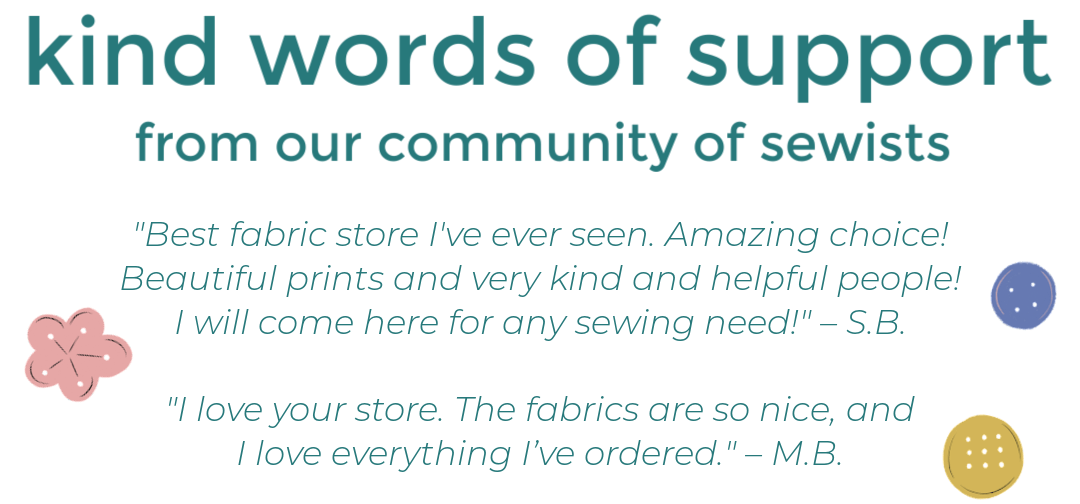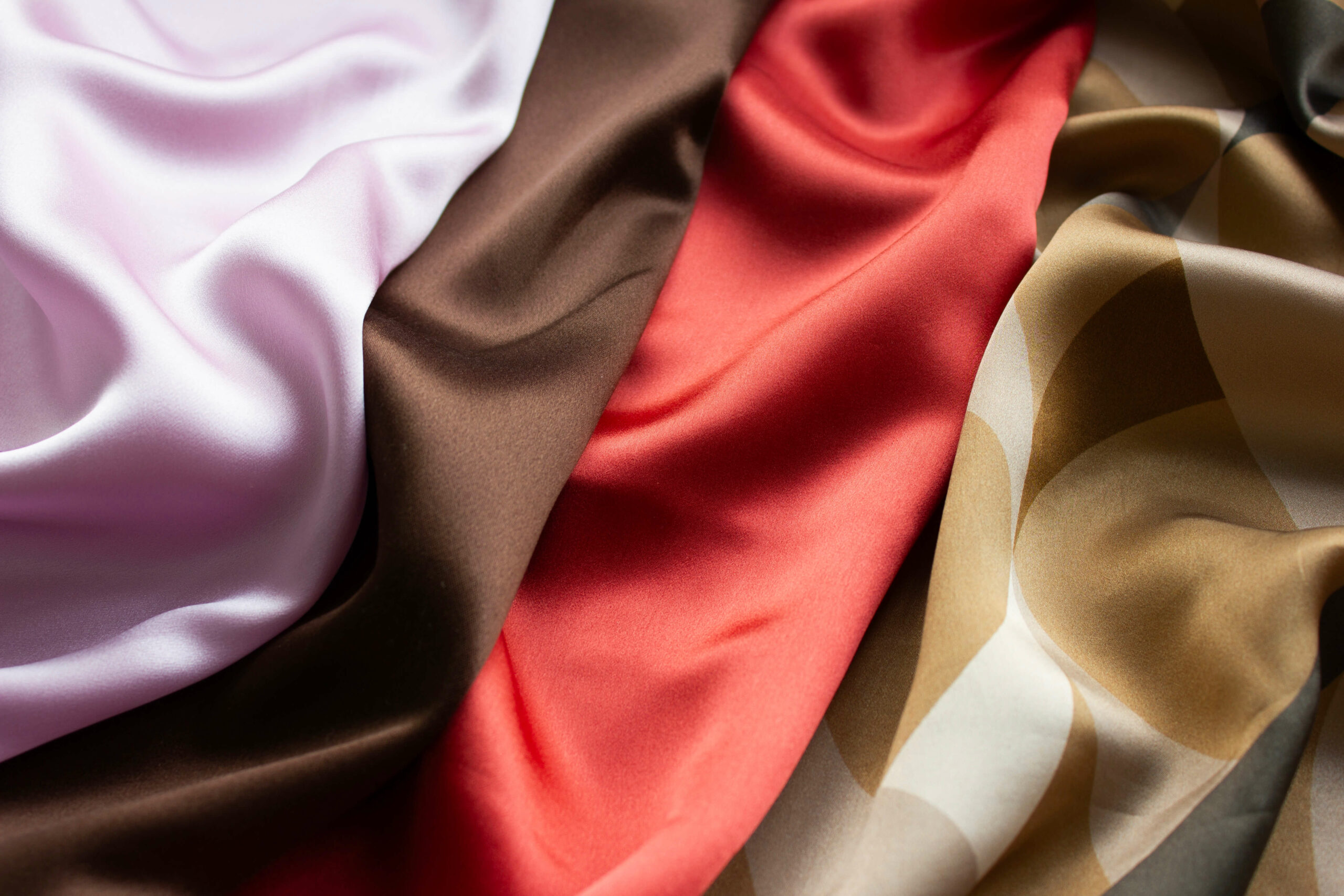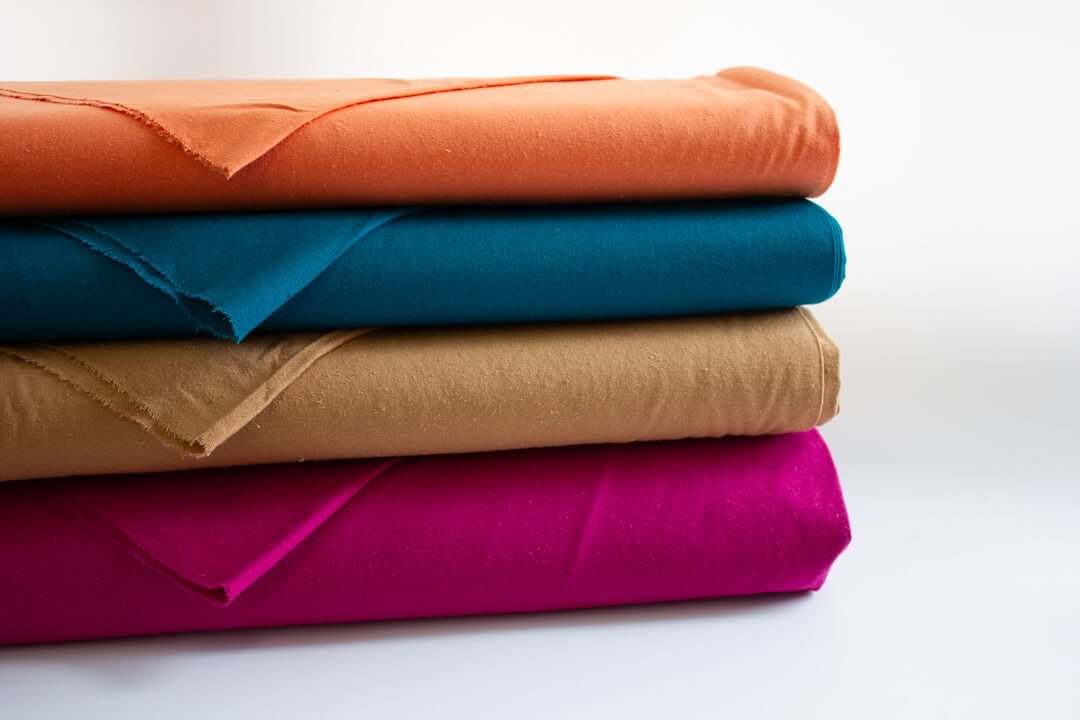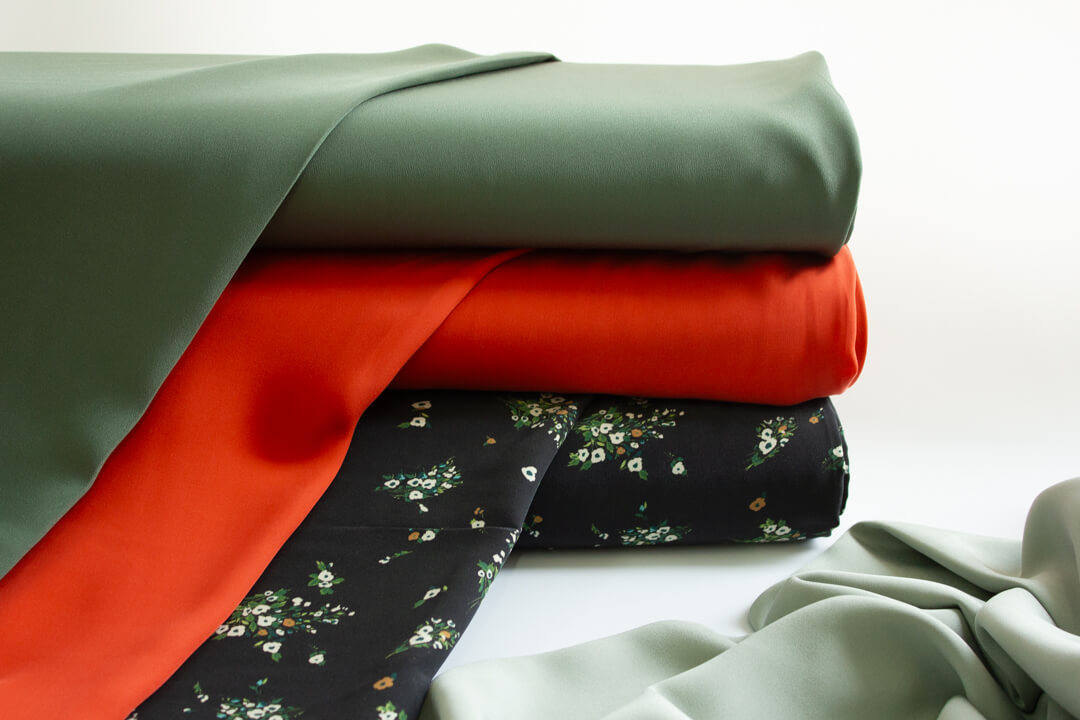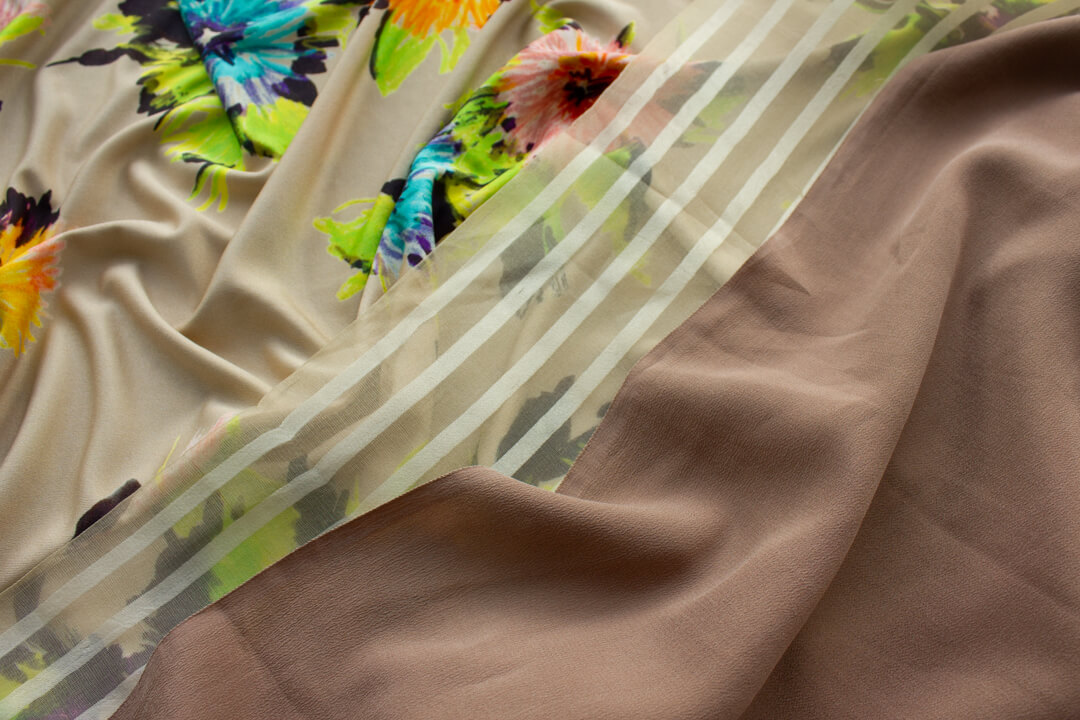
Silk charmeuse has a lustrous satin face with a matte crepe back. These silks have an incredibly silky hand and fluid drape and are perfect for blouses, dresses, skirts, pjs, and special occasion wear—some of our favorite patterns for silk charmeuse include the Saltwater Slip, the Ravine Dress, the Fran Pajamas, and the Billow Blouse. One “silk secret” we love is to use the crepe back of the fabric for the outside of your garment if you love the color and feel but don’t want the satin look. You can also use the reverse side of the fabric for contrasting design elements like cuffs and piping.

Silk noil is easy to work with and can add a bit of luxury to your everyday look. It has a beautiful drape, a wonderful nubby texture, and is easy to care for. There are so many colors and possibilities for this great silk—the people’s silk! This would be a wonderful choice for garments inspired by Eileen Fisher’s sophisticated, minimalist silhouette—use silk noil for garments like the Bob Woven Pant, the Long Sleeve Tunic, and Dress No. 2.

Silk crepe has a subtle texture and a flowing drape—it is a strong, lightweight fabric that is perfect for great dresses, skirts, tops, and more. Most silk crepes weigh 52–60 gsm (grams per square meter), a wonderfully light and airy cloth for garments like the Nexus Blouse and the Nicks Dress. We have recently been able to source a few amazing 3-ply and 4-ply silks from top designers. These heavier crepes can weigh 135–175 gsm, making them even more versatile—they’ll be lovely for garments like the Pull On Trousers and the Meridian Dress.

We often talk about a fabric’s “hand” being soft or beautiful, firm or stiff, and its weight being heavy or light. The hand of a fabric refers to the way the fabric feels when you touch it. It doesn’t really matter how pretty a print is or how extraordinary a woven design is; if it doesn’t feel right to your touch for the project you have planned, then you’re probably not going want to sew with it. This is especially important to consider when shopping online, and is one reason why we recommend ordering a 1/8-yard sample of fabric before buying yardage for your project!

How will you care for your silk garments? This consideration should be the very first step of your project, followed by test washing a fabric swatch! While washing silk charmeuse will take away its pristine look, it will not hurt the fabric—washing can actually make it more wearable and give it a beautiful “sandwashed” look! We recommend hand washing or gentle machine washing for silk charmeuse and crepe—use cold water and a delicate soap like Soak Wash and hang to air dry. What about silk noil? It is often called the most washable silk, because washed raw silk has a beautiful, soft, lived-in texture. As with the other silk, hand washing or a gentle machine wash cycle with a cool water and a gentle detergent is the way to go. If you want to preserve the original condition of your silk charmeuse or silk noil as much as possible, we recommend dry cleaning. Remember: silk has been worn for thousands of years, but dry cleaning has only existed for about 200 years!

